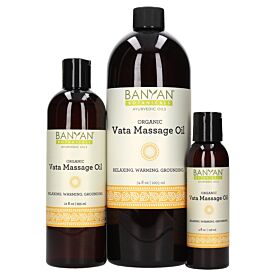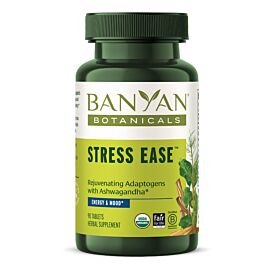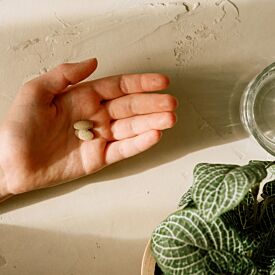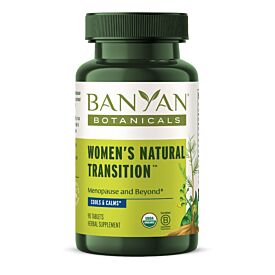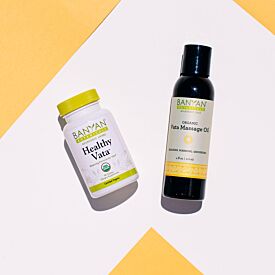Exercise in the Vata Time of Life
My kapha partner used to call me his Energizer Bunny, à la the Energizer battery mascot. While his slow kapha nature could sit on the sofa and watch old movies for hours, I would jump up and down, too antsy to sit still for an entire movie. I would get him moving, and he would calm me down.
My predominantly vata constitution was all about movement, and move I did. Sitting still was not an option. I would crash and burn though, which is typical vata-type energy. High energy one moment, near-tears exhaustion the next.
When my beloved kapha died, I swore he left some of his slow, heavy energy behind for me. Maybe it was just grief, but my body yearned to be grounded, and I was forced to put the brakes on. I was also in my late fifties and had entered the vata time of my life. (Around age fifty we begin transitioning from the pitta years to the vata years.)
With a lot of vata in my constitution, it was important for me to learn how to calm that energy that had kept me hopping for more than half a century. It can be a hard concept for vata-types. Slowing down is not in our vocabulary. But slow down we must, or our often fragile bodies will do it for us.
Because Ayurveda teaches us to think in terms of opposites to help maintain balance in the body and in the mind, you can see by the vata characteristics that we should be striving to stay warm, moist, and grounded. This can be accomplished by our food choices, how we dress in cold weather, using lots of vata-pacifying oils (internally and externally), and doing practices that help ground us, such as meditation and yoga.
I’m not just talking about people with lots of vata in their prakriti (constitution). Ayurveda teaches that we are all comprised of the three doshas, just in varying degrees.
As we move into the vata time of life, all of us will see an increase in vata dosha.
When it comes to exercise in the vata time of life, we should think about pacifying our own constitution, as well as vata dosha. Make sense?
I have always preferred (and still prefer) exercise that has some fun built into it. Riding my bike, ice skating, jumping, dancing, skipping rope, hula hooping, and so forth. I’ve never been a runner (too depleting for me), but I have plenty of vata and pitta friends who love to run.
I still remember Ayurvedic teacher, Dr. Vasant Lad, admonishing a group of students in a class (talking mostly to the vata- and pitta-types) by saying “No running!!!” because it can easily deplete vata people and overheat already fiery pitta-types.
I tried to reiterate that once to a highly pitta friend of mine who was running on a 90+ degree humid afternoon in the summer. She just rolled her eyes at me.
And my kapha friends (and partner)—well, I didn’t need to tell them. Kapha is the dosha that likes to chill the most, and running is not often at the top of their preferred exercise list.
I’m not bashing running here—I know many people who consider it a lifesaver for them. But, especially for those who are highly vata, and for all of us in the vata time of life, extreme running (i.e. marathons) can be incredibly depleting. Vata-types also often have joint issues because of their inherently dry constitution. And dryness becomes even more of an issue during our vata years.
So if you’re a dedicated runner, be mindful and be sure to deeply nurture yourself afterward. Or maybe try something new that’s a little more rejuvenating, rather than depleting.
What are some ideal vata time of life exercises? Here are a few that I’ve fallen in love with over the years (well, not golf, but I’ll include it on the list!) that have helped to pacify my vata. I’ll bet you can guess what will be at the top of the list (hint hint—it’s the sister science of Ayurveda).
- Yoga
- Qigong
- Tai Chi
- Walking/Hiking
- Dance
- Cycling (light)
- Swimming
- Golf
- Light weight training
Whatever exercise you choose, let it be one that you enjoy!
My kapha partner loved going to the gym and lifting weights. I, on the other hand, prefer being outside (when it’s warm enough) or in my peaceful abode doing my little routine. I have a gym and a yoga studio right in my building, and in almost three years, I’ve used them both once! I used to love to go to yoga class, but nowadays I prefer my solitary early morning routine.

For many people, being with a group is more fun and a great motivator, so go for it! And if you’re a newbie with yoga, qigong, or tai chi, a class is certainly necessary for learning proper alignment and technique.
As you enter the vata time of life, be sure to keep an awareness about your energy levels. Vata is the dosha of depletion, and it’s of vital importance that we respect this and nurture our energy levels to maintain optimal health during these precious years.
If you’ve never heard the term ojas in Ayurveda, you can learn more here. It’s a precious substance—often referred to as the essence of life. Excessive or overly depleting exercise, especially during the vata years, can chip away at our ojas reserve and wreak havoc on our bodies.
On the flip side, it can be easy to slip into a sedentary routine, which can become just as unhealthy. Like many of us, I spend way too much time sitting in front of a computer. It’s where I write the best and do most of my work. Who’d have ever thought I’d need to set a timer to remind myself to get up and move. (Dance break!)
As always, balance is key. Ditto moderation.
Exercise is such an important part of our daily lives, and it can help us live not only longer but with more strength and stamina and joy.
The Sanskrit word, Ayurveda, was derived from the root words ayuh, meaning “life” or “longevity,” and veda, meaning “science” or “knowledge.” It is the knowledge/science of life and longevity. This is a wise system of health available to each and every one of us for free! Living according to its ancient principles can help us navigate our elder years with a strength of body, mind, and spirit.
And speaking of spirit, vata is often called the “spiritual dosha.” So as we move into our elder years, it’s the perfect time to move in the direction of a more spiritual way of living our life.
Leaving the competitive pitta years behind can apply to our exercise routine as well. Choosing to let exercise be an integral part of keeping our body, mind, and spirit healthy and strong, without the burden of competition, can be a more peaceful way to live. After all, our bodies have taken a lot of abuse from us over the years. Time to nurture them, not add more stress.
Someone who’s known me for over a decade recently told me that when she met me, she was overwhelmed by my frenetic energy and thought to herself, “This girl’s making me dizzy!” I laughed out loud at that.
At 63, I can sit still long enough to watch a movie (well, only if I’m in a theater) and I meditate daily. These days it’s more likely my mind that is racing around, rather than my body. Meditation has been a lifesaver in that regard. If you’re not a meditator, I highly recommend giving it a whirl. It’s one of the best things I’ve ever done for myself. It’s free and available to all of us, no matter what our age is.
It makes me sad when I meet people my age (and even younger) who are so upset and afraid about getting older. It can be such a fertile time of life. Embracing the positive qualities of vata dosha—creativity, quickness of thought and action, and a playful way of moving through life, can help take away that fear.
With a nod towards the wisdom of Ayurveda, we can harness all of these qualities in our elder years and live out the final third of our life with vitality, enthusiasm, and a childlike spirit. So much better than the alternative, don’t you think?




